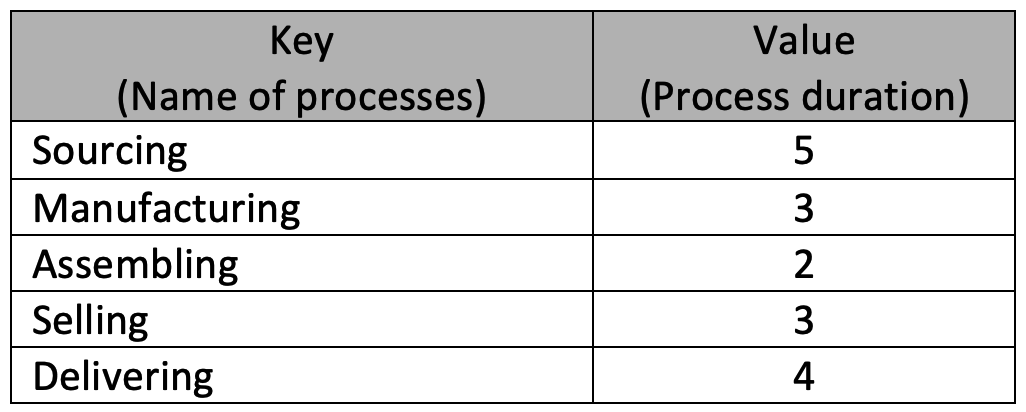Decomposing a process into a sequence of events
Imagine you work for a company that produces mobile phones and have been asked to propose ways to optimize the entire supply chain operation. They want to allocate resources better, increase productivity, and identify-eliminate bottlenecks.
A digital twin of the entire operation based on a discrete-event model can help achieve this goal. The first step is to list the process groups involved in the production line and define their processing times (table below). You know that each of the groups of processes you identified involves many sub-processes and tasks, but the focus, for now, is on coding the first version of the model.
Dictionaries are an excellent way to organize information about processes. Time will be measured in days.

This exercise is part of the course
Discrete Event Simulation in Python
Exercise instructions
- Create a dictionary named
processeswith keys and values corresponding to the table as follows: (1) the name of the process as the key and (2) the process duration as the value.
Hands-on interactive exercise
Have a go at this exercise by completing this sample code.
# Create a dictionary containing the processes and durations
processes = {
"____": ____,
"____": ____,
"____": ____,
"____": ____,
"____": ____
}